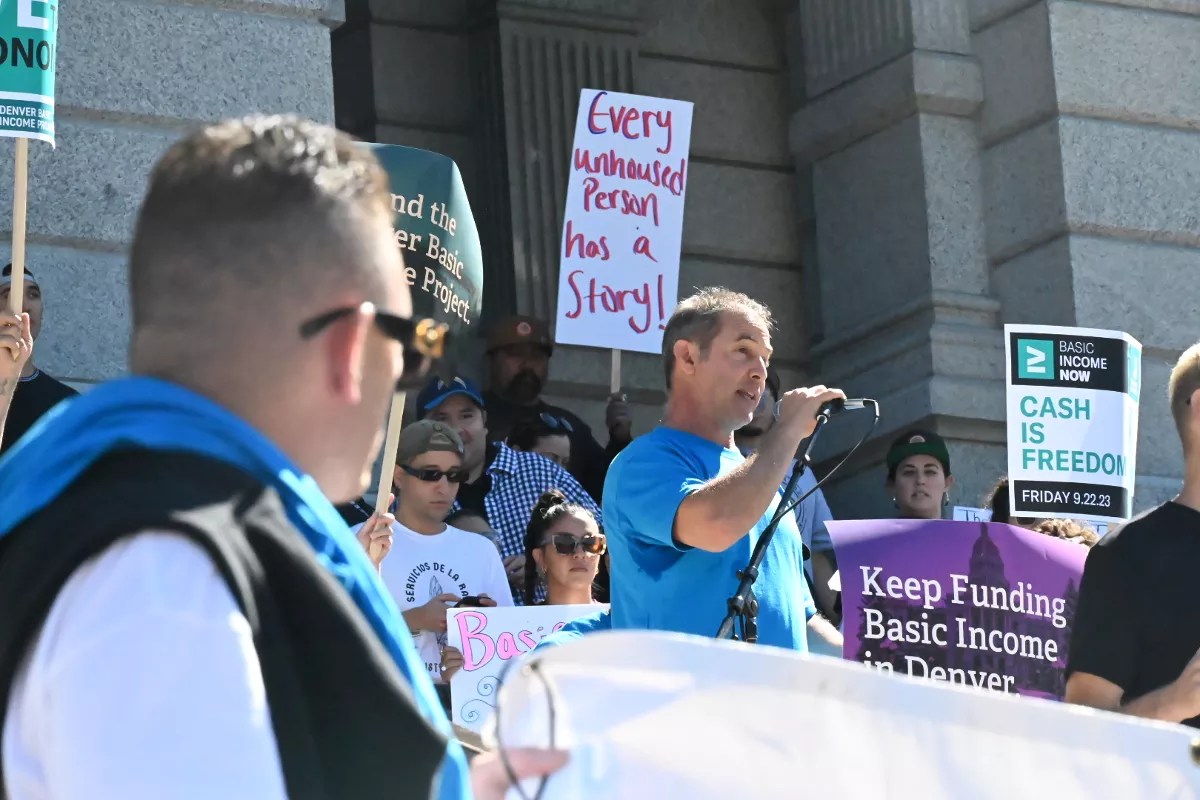
Bennito L. Kelty

Audio By Carbonatix
The Denver Basic Income Project was a bold idea inspired by a provocative question: Would providing substantial cash payments to unhoused individuals enable them to secure more stable housing?
The DBIP team admirably put their idea to the most rigorous test they could – evaluation in a randomized controlled trial (or RCT).
Unfortunately, contrary to media reports that the cash payments were found to dramatically improve their recipients’ housing situation (e.g., from NPR, CBS, CNN and, most recently, the Denver Post), that is not what the study found. The disconnect between the reporting on the study and its actual findings is problematic and adds significant confusion to the current debate between Mayor Mike Johnston and some Denver City Council members about whether to continue funding for DBIP.
To understand the disconnect, it is important to understand the study’s methodology. The study randomly assigned 807 unhoused individuals to one of three study groups. Two of these groups (the “treatment” groups) were assigned to receive a total of $12,000 per person over the course of one year, either in twelve equal monthly installments or in a sizable up-front payment followed by smaller monthly installments. The third group was a comparison group that only received $600 in twelve monthly payments of $50; these far smaller payments were not expected to improve housing outcomes, given Denver’s high housing costs.
Will you step up to support Westword this year?
At Westword, we’re small and scrappy — and we make the most of every dollar from our supporters. Right now, we’re $21,000 away from reaching our December 31 goal of $50,000. If you’ve ever learned something new, stayed informed, or felt more connected because of Westword, now’s the time to give back.
Importantly, the process of randomly assigning individuals to the three groups ensured to a high degree of confidence that there were no differences between the groups in any characteristics except for one: the amount and schedule of their cash payments. This meant that, when the study tracked study participants over time, any differences in their housing stability could confidently be attributed to the different cash payments – with the obvious hypothesis being that the groups receiving much larger payments would have much better outcomes.
Unfortunately, that is not what the study found. At the ten-month follow-up, there were no statistically significant differences between the three groups in their housing status, meaning the treatment groups, who received twenty times as much money as the comparison group, were statistically no more likely to secure stable housing after ten months than the comparison group.
Press coverage of the study’s findings has focused on the fact that all three groups were substantially more likely to be housed at the ten-month follow-up than at the start of the study. However, rather than indicating that the cash itself caused this improvement, it is more likely that these results reflect the fact that for many unhoused individuals, homelessness is a temporary state that, whether they receive cash payments or not, they are able to escape within ten months through their own resilience, ingenuity and assistance from existing social services. The Colorado Coalition for the Homeless reported that in 2022, a little over one-third of Colorado’s unhoused population was considered “chronically homeless,” meaning almost two-thirds were not. The DBIP study’s sample population may have been less likely to experience chronic homelessness, as it did not include unhoused individuals with the most acute structural barriers, like severe mental health or substance-use issues.
Regarding his administration’s decision not to include additional funding for DBIP in this year’s budget, the mayor correctly said: “I think the data is not yet clear about the net impact on this as a housing strategy.”
Clearly, it is disappointing that the DBIP did not produce its hoped-for effects, but a lesson on next steps for the program can be learned from another well-intentioned effort to help a vulnerable population.
The Camden Coalition, developed by Dr. Jeffrey Brenner in Camden, New Jersey, served hospital “super-utilizers” (individuals with frequent hospital admissions) by helping coordinate their outpatient care and linking them with social services. The press touted the program as highly effective because program recipients had substantially lower rates of hospitalizations after the program than they did before. Still, Dr. Brenner wanted to be sure the program was causing those reductions in hospital usage and evaluated it in an RCT. Unfortunately, the Camden RCT produced unexpectedly discouraging results, finding the program had no impact on subsequent hospitalizations. The study group that received the program and the control group that did not experienced virtually identical declines in their hospital utilization over time. In response to the findings, Dr. Brenner told NPR, “It’s my life’s work. So, of course, you’re upset and sad.” However, rather than give up or try to put a positive spin on the study, he channeled his sadness into modifying and retesting his approach.
It takes courage to rigorously evaluate one’s life’s work – and even more to accept disappointing findings – but it is this courage that is necessary to do the hard work of finding solutions to the challenging problems facing society’s most vulnerable populations.
David Anderson, a longtime Denver resident, is president of EBP Consulting, which he founded after nearly two decades advocating for the use of rigorous evidence to guide policymaking, including as the vice president of the Coalition for Evidence-Based Policy and then vice president of Evidence-Based Policy at Arnold Ventures, a national philanthropic organization.